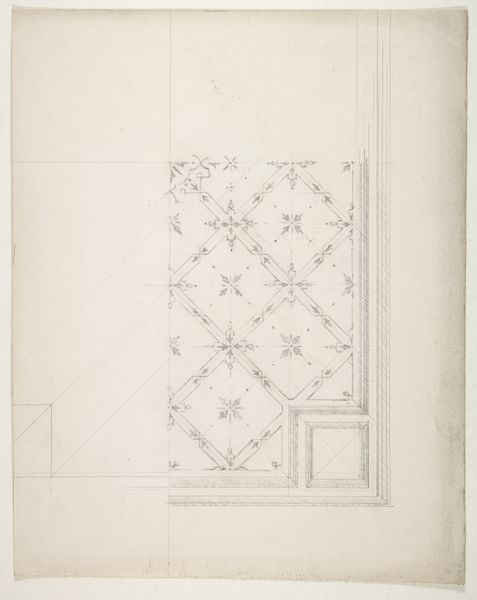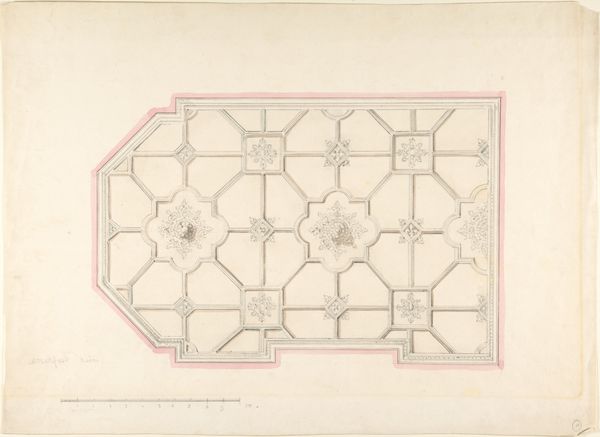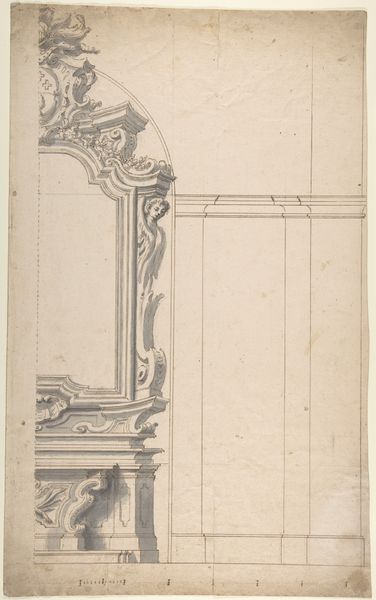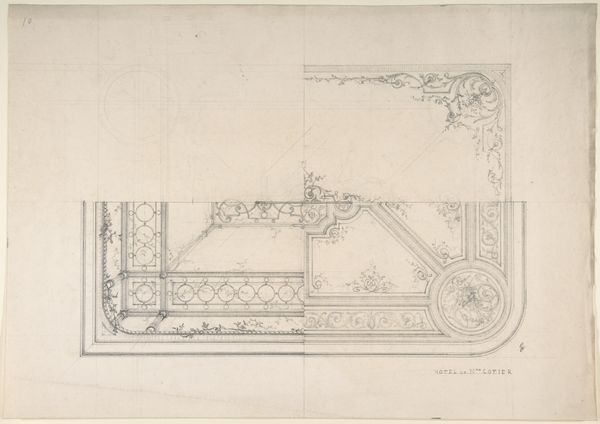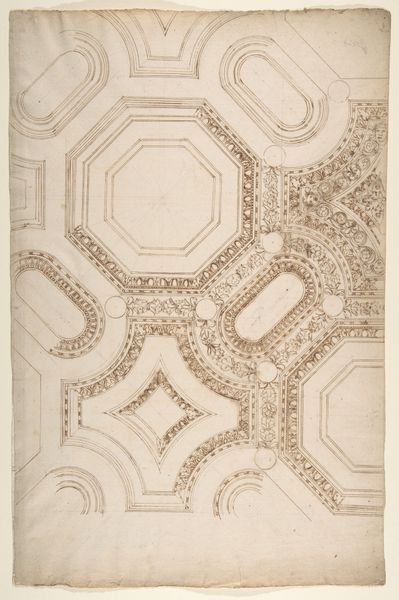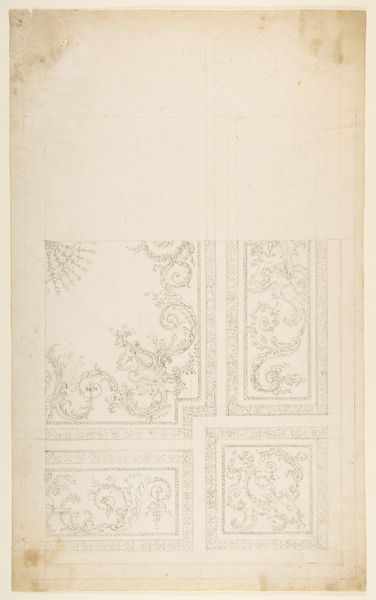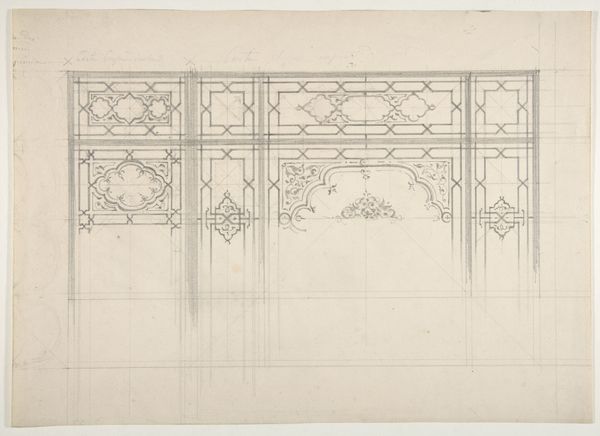
drawing, print
#
drawing
# print
#
form
#
geometric
#
line
#
decorative-art
Dimensions: Overall: 10 1/4 x 15 7/8 in. (26 x 40.4 cm)
Copyright: Public Domain
Curator: At first glance, it's a rather restrained piece; mostly straight lines, some soft curves, and minimal shading to give dimension. Editor: This is "Two designs for a ceiling", dating from 1850 to 1900. It is believed to be by Jules-Edmond-Charles Lachaise. The medium is listed as both drawing and print. It's currently held in the collection of the Metropolitan Museum of Art. The designs represent what look to be classical geometric patterns. Curator: What I find particularly compelling about these types of architectural renderings is the subtle demonstration of power. Consider the grand halls and residences these designs were meant to adorn—who commissioned them, and who would have lived and moved within them? The patterns, even in their formality, exude authority and affluence. Editor: Exactly, we have to situate this design within its socio-political context. The symmetry and precise detailing speak to a specific kind of architectural aspiration prevalent at the time, linked closely with class and cultural identity. Who was commissioning such elaborate ceilings? Likely members of the elite who wished to visually assert their place in the hierarchy. Curator: The artist is essentially participating in the construction of that visual language of power. I also see how the labor is carefully hidden from the image. These perfectly realized shapes deny the physical exertion required to install something like this at great heights. Editor: That’s right. If installed, the ceiling would have transformed the architectural experience of anyone moving through that space, literally looking up to it and, in a way, internalizing its message. But is there also, perhaps, a dialogue here between form and function? After all, these are not merely patterns, but components of a larger structural element of the building. Curator: It’s tempting to see this purely through a Foucauldian lens of power dynamics, yet there's also an element of artistic ingenuity at play. The way the patterns interact, the use of repetitive motifs...Lachaise displays a refined artistic sensibility within the conventions of decorative art. Editor: Indeed, thinking about it now, this seemingly straightforward design speaks volumes about the intersections of class, aesthetics, and the subtle but effective wielding of influence in the 19th century. Curator: A confluence certainly worthy of a second look.
Comments
No comments
Be the first to comment and join the conversation on the ultimate creative platform.
